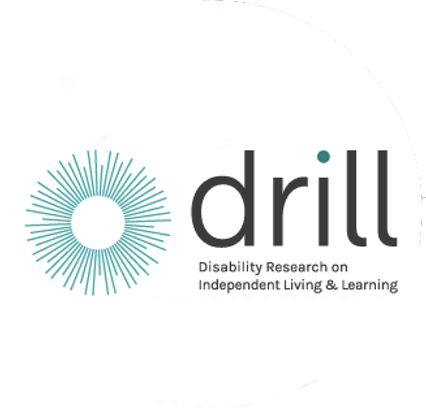Blog: Looking at the effectiveness of Accessibility Plans in secondary schools
DRILL has published the research carried out by the Alliance for Inclusive Education (Allfie) into the effectiveness of Accessibility Plans in secondary schools. Dr Armineh Soorenian, who carried out the research, tells us about what she found and some of the stories she heard.
I travelled across England and conducted 12 focus groups consisting of Disabled young people, parents of Disabled young people, and education professionals. Participants shared their experiences relating to the impact of Accessibility Plans on a range of school practices. Interviews were held with a small number of parents. Alongside the field study, I ran two sets of online surveys, accessing almost 350 parents and professionals. Finally, I collected quantitative data to support the findings, which involved sending out freedom of information requests to OFSTED/local authorities and gathering official statistics.
What are Accessibility Plans?
Accessibility Plans are legal documents that set out how, over time, a school plans to increase access to the curriculum and the physical environment for Disabled pupils, and to make written information more readily available in a range of different formats.
Our findings
In our online survey, almost 80% of parents were not aware of the existence of their schools’ Accessibility Plans. Field study participants told us that they were not given information regarding the documents, and were hardly ever involved in their production, development or review. They saw them as ‘worthless pieces of paper’ if schools lacked the drive to adhere to their basic principles and foster a culture of equality and inclusion.
A major outcome of this project has been to highlight the negative, sometimes devastating, impact that ineffective school Accessibility Plans can have on Disabled children and their families. The shocking discrimination and segregation experienced by our young participants is firm evidence that the UK is persistently in breach of Article 24 of the United Nations Convention on the Rights of Persons with Disabilities.
The young participants reported that they were denied full participation in their school communities. Regular barriers included inadequate transport, lack of trained staff, access issues, and prejudicial attitudes. The Disabled young people felt isolated and shut out.
Adam explained how transport issues had restricted his son’s social inclusion: ‘My son is taken in a taxi and the timing can’t be varied, so he can’t join in any after-school clubs. Also, we don’t meet the other parents or families, so that excludes us to a certain degree. Normally you’d stand outside the school gate […], but we’ve not had that experience. We mentioned it to one of the schools and they set up a parent liaison club during the day, but because of work or other commitments it’s not really practical.’
In the focus groups, parents were critical about the lack of trained staff available for social activities and events. One parent was told, for example, that the matter of their child going to the toilet, for which they needed support, became a ‘care’ issue after 3:30pm rather than an ‘extra education’ one. Parents were generally concerned about the impact that similar experiences were having on their children’s emotional and social health.
‘Access’ is often perceived by schools and education authorities as relating almost entirely to pupils with physical impairments, rendering those with learning and sensory impairments invisible and putting them at an unfair disadvantage. One parent explained how their child’s sensory issues were totally overlooked: ‘Too much distraction. Walls and some windows are covered with text, photos, pictures, drawings, info. Desks are filled with stationery pots. The acoustics in the dining area are bad, making it extremely noisy at lunch and break times.’
Staff attitudes played a significant role in the levels of inclusion experienced. Our young participants and parents felt that if a teacher liked or disliked them, it made all the difference: ‘The head was new to start when [my son] was there and she took an instant dislike to him because she just saw him as naughty. She didn’t think that he had any special needs or anything. So, we stumbled across a lot of hurdles until she got put into the position where there was no SENCO at school, there was no deputy head, and she had to take the responsibility. Then she realised that there might possibly be something different about my child and not necessarily just naughty. But in spite of that, she still didn’t want him in the school, so she was working at getting him out. I think by the time it came to his exclusion, his permanent exclusion, I figured that if that was her attitude and her approach to him being at the school, it’s not in his best interests to be there…’
Separating Disabled learners from their non-disabled peer group is discriminatory. It limits life opportunities and produces an unjust society. Young people’s experiences of exclusion and isolation are likely to have a lasting and damaging effect on their mental health and self-esteem. One mother talked about her daughter: ‘She still, now, gets very angry and frustrated when she feels she’s not being taken just like the other children […] What I find is that teachers want to resolve an issue and they don’t listen to my daughter first. There is a lack of comprehension for the need to validate what my daughter is experiencing …’
The key to reversing the effects of segregation is a fully inclusive system. As one parent expressed: ‘I think we’ve had a generation where they’ve forgotten the “not seen.” They know they’re there, but they just don’t know what to do with them. It’s [about] bringing them back out into the forefront of how brilliant these kids can be and what they can achieve and what they can do.’
